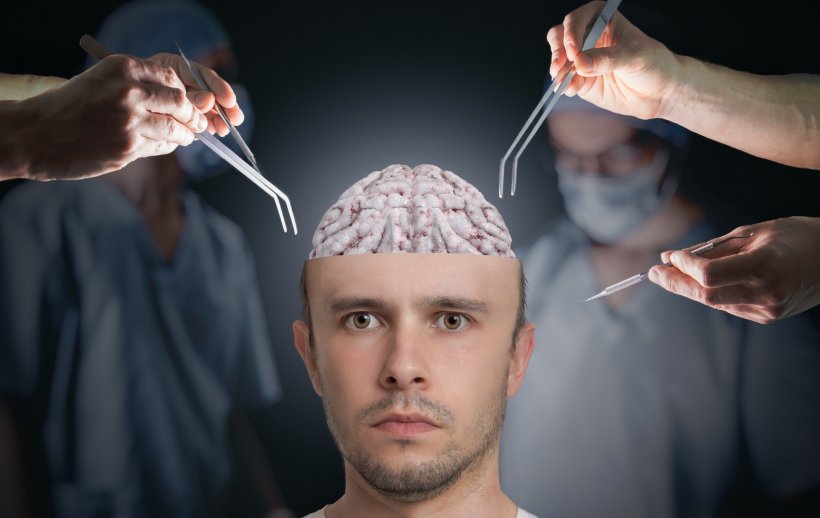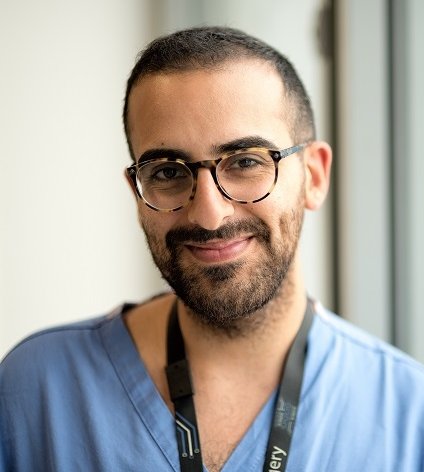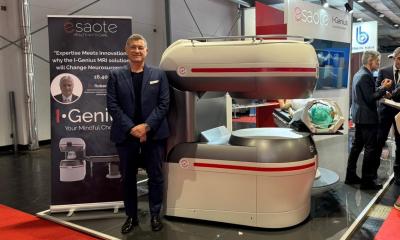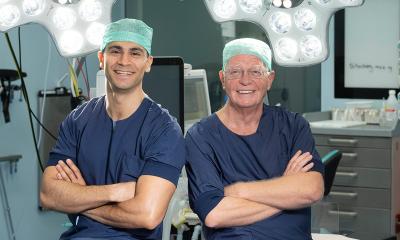
Source: Shutterstock/vchal
Article • Neurosurgical operating theatre
Neurosurgery taught via Virtual Reality
Virtual Reality (VR) technology is aiding trainee surgeons to practise complex procedures in a simulated setting, rather than learning skills on real patients. VR is also helping to demystify neurosurgery in that it enables medical students and patients to ‘enter’ and experience a neurosurgical operating theatre.
Report: Mark Nicholls

Alex Alamri, a trainee neurosurgeon at Barts Health NHS Trust in London, UK, said hands-on experience of brain surgery in an operating theatre is not always straightforward for medical students. The Barts Health Trust surgeons have been working on the project with Fundamental VR, a London-based firm that has developed a VR system to allow trainees to conduct virtual surgeries. Haptic feedback, which recreates the sense of touch to the user, provides real-time responses to what surgeons feel during procedures.
‘We have been helping to develop Hololens-based applications so that neurosurgery trainees can attempt procedures safely, pre-operatively,’ Alamri said. ‘It means that the first time you try to perform a complex procedure it is simulated, and not on a real patient. When performing procedures in real life there is a certain anxiety that goes with the high stakes, which can definitely affect performance. ‘If you can practice a high-fidelity simulation over and over again before you even set foot in an operating theatre, your procedural fluency and confidence undoubtedly will be better than without these tools.’
Sharing experiences
Surgeons are also using the initiative to encourage patients who have undergone neurosurgery to share their experiences to help other patients and their families, as well as healthcare professionals, understand neurosurgical decision-making processes.
Mr Alamri said that advent of VR and hardware solutions such as Google cardboard mean that medical students no longer need to ‘sit at the back of the operating theatre’ and not get a clear view of what is going on. The Barts team used a number of GoPro Hero 4 cameras strapped the heads of surgeons to film the 360VR sequences that formed the basis of the neurosurgery training solution and steps towards wider public engagement in the specialty.
Alamri, along with surgical colleague Chris Uff, and others at The Royal London Hospital, conducted one of the first brain surgery procedures on an aneurysm to be recorded in VR. At around the same time, a team from Helsinki used the Nokia OZO system to stream augmented neurosurgery to neurosurgeons, but the London team’s emphasis was to open up the 360 film of the brain surgery procedure to a wider public audience.
‘We stitched in head mounted GoPro views, so that the public could see exactly what a consultant neurosurgeon sees when they operate,’ he explained. The film is part of a larger endeavour called Brainbook, which uses brain surgery videos to educate students and is the world’s first project dedicated to public engagement in neurosurgery.
Social media discussions and high quality videos
High quality videos are produced to explain common pathologies and procedures, and each of these are embedded within a case based on a real patient story
Alex Alamri
The online multimodal neurosurgical resource uses social media to discuss cases and provides insight into life at the Royal London Hospital, the UK’s busiest neurosurgical major trauma centre, with particular highlights of the activities of the multidisciplinary team.
‘Brainbook places emphasis on using lay terms and providing definitions for terminology to allow everyone to participate in discussions,’ Alamri explained. ‘Social media conversations are pitched at levels appropriate for everyone from members of the public to neurosurgeons around the world. The initiative encourages patients who have previously undergone a neurosurgical procedure to share their experiences.’
The Brainbook team has collaborated with medical illustrators Dr Ciléin Kearns (Artibiotics.com) and Dr Luis Domitrovic (Ladvic.com) to provide high-quality medical art and animation to help better illustrate concepts that participants may find more difficult to grasp.
‘High quality videos are produced to explain common pathologies and procedures, and each of these are embedded within a case based on a real patient story,’ he continued. ‘The videos are uploaded to YouTube, without restriction, allowing universal access. The aim is to help patients and their families, as well as allied healthcare professionals, understand neurosurgical decision-making processes and what to expect if they need to undergo neurosurgical treatment. The videos also act as a primer for junior neurosurgical trainees with limited access to resources. The development of haptic, or kinesthetic, communication, is the key to advancing the concept, though development costs remain a challenge. Better haptics means better fidelity.’
Profile:
Alex Alamri is at Barts Health NHS Trust, in London, studying in his third year of eight to become a neurosurgeon. He also has a major interest in developing the application of Virtual Reality technology within a surgical setting.
11.11.2018











